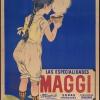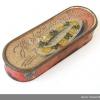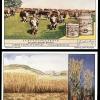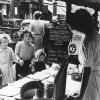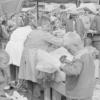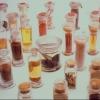The laboratory becomes the new mark of trust
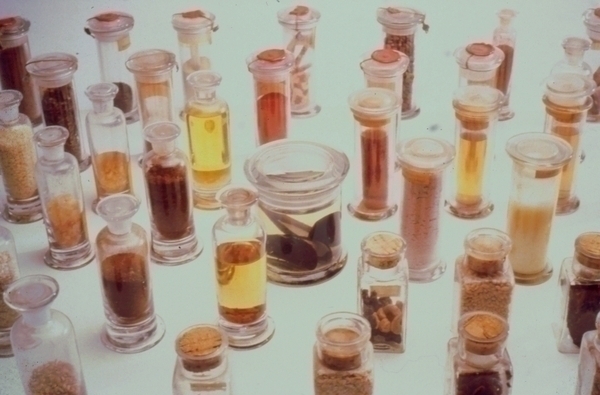
Assortment of samples from the Keuringsdienst van Waren (product certification service)
One of the biggest problems in selling new, pre-packaged foods was getting people to trust foods they had not seen prepared. That trust was not always earned.
Unscrupulous manufacturers often cut or completely replaced expenstive ingredients with other, cheaper substances that had similar properties, but were often poisonous. Food adulteration ran rampant, especially in the second half of the nineteenth century, and newspapers frequently reported scandals. The same chemical processes that allowed many new foods to be produced also helped to detect the crimes.
The respected British medical journal The Lancet began testing many new industrial products in 1850 and it was a scandal when they announced that just over half of their samples of chocolate contained dust from red bricks. This and other scandals led to the passing of new laws in 1860 and 1872.
In the Netherlands, there were no such laws until much later. Individual cities began to set up their own product certificaton service [Keuringsdienst van Waren] to test industrial products. Rotterdam was the first, in 1893, particularly for milk products, and was soon followed by most of the other major cities. The Dutch services also caught a number of dangerous foods. Samples preserved in the Museum Boerhaave include of a "milk preservative" that is 67 percent borax, and candy with the highly acidic pickling agent alum.
In the face of such scandals, firms like Liebig and the British chocolate firm Cadbury began even more to draw attention to their own chemical labs as a sign that consumer could trust them.
 Previous Story
Previous Story
How to cite this page
Slawomir Lotysz, 'The laboratory becomes the new mark of trust', Inventing Europe, http://www.inventingeurope.eu/story/the-laboratory-becomes-the-new-mark-of-trust
Sources
- Coe, Sophie Dobzhansky, and Michael D. Coe. The True History of Chocolate. Thames and Hudson, 2007. (pp. 244-5)





